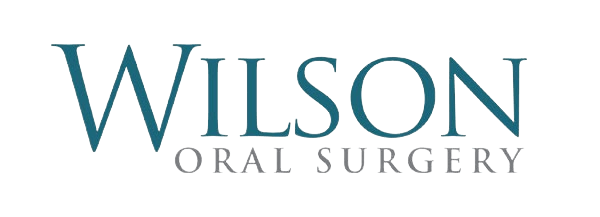Platelet-rich fibrin (PRF) treatment is a regenerative technique that utilizes the patient's blood to promote tissue healing and regeneration. During the procedure, a small amount of blood is drawn and then centrifuged to separate the platelets and fibrin from other blood components. The resulting PRF concentrate, rich in growth factors and cytokines, is applied directly to the treatment area, such as injured tendons, ligaments, muscles, or surgical sites.
PRF promotes tissue repair, accelerates healing, reduces inflammation, and enhances tissue regeneration, making it valuable in various medical fields, including orthopedics, dentistry, dermatology, and plastic surgery. Its applications range from promoting wound healing and tissue regeneration to enhancing the success of bone grafts and dental implants.
PRF treatment is a natural and safe approach to stimulate the body's healing mechanisms, providing patients with improved outcomes and faster recovery times.
The Procedure of PRF Treatment
- A small amount of the patient's blood is drawn from a vein, typically in the arm, using a syringe or vacuum tube.
- The blood sample is placed in a centrifuge machine, which spins rapidly to separate its components based on density.
- After centrifugation, the blood separates into three layers: red blood cells at the bottom, a PRF clot in the middle, and platelet-poor plasma at the top. The PRF clot, which contains a high concentration of platelets, leukocytes, and growth factors, is carefully isolated using sterile instruments.
- The PRF clot is then prepared for application in the treatment area. Depending on the specific procedure, it may be used alone or combined with other materials, such as bone grafts or biomaterials.
- The dental professional thoroughly cleans and prepares the area to be treated. This may involve removing damaged tissue, debriding the area, or creating a surgical site.
- The prepared PRF clot is placed directly into the treatment site, acting as a natural scaffold for tissue regeneration and wound healing. It may be placed over extraction sockets, bone grafts, or surgical sites to enhance healing and promote tissue regeneration.
- Once the PRF is placed, the treatment site is closed using sutures or other appropriate methods. Patients are provided with postoperative instructions, including guidelines for oral hygiene, pain management, and follow-up care to ensure optimal healing and treatment outcomes.
Applications of PRF Treatment
Dentistry
- After tooth extraction, PRF enhances bone regeneration in sinus lifts, ridge augmentation, and socket preservation. The growth factors in PRF stimulate osteogenesis (bone formation), leading to faster and more predictable outcomes.
- PRF promotes periodontal tissue regeneration and wound healing in patients with gum disease (periodontitis). It is particularly beneficial with surgical procedures like guided tissue regeneration (GTR) and flap surgery, leading to improved clinical outcomes and long-term stability.
- PRF is increasingly utilized in dental implant procedures to accelerate osseointegration (fusion of the implant with bone) and enhance soft tissue healing around the implant site. This reduces the risk of complications and improves the success rate of dental implants.
Orthopedics
- PRF injections treat joint injuries, including osteoarthritis, tendonitis, and ligament injuries. The growth factors in PRF promote tissue repair and reduce inflammation, relieving pain and improving joint function.
- PRF is applied during surgical tendon and ligament repair procedures to enhance healing and improve outcomes. It can be used as a biological scaffold to support tissue regeneration and facilitate the integration of grafts or sutures.
- PRF may be applied directly to fracture sites or incorporated into bone grafts to promote faster and more robust bone healing. Its osteogenic properties stimulate bone formation and angiogenesis, accelerating the consolidation of fractures and reducing recovery time.
Aesthetic Medicine
- PRF is used in facial rejuvenation treatments to improve skin texture, tone, and elasticity. When injected into the skin, PRF stimulates collagen production, reduces wrinkles, and enhances skin hydration, resulting in a more youthful and radiant complexion.
- PRF injections treat hair loss (alopecia), stimulate hair follicles, and promote growth. By delivering growth factors directly to the scalp, PRF rejuvenates dormant hair follicles, increases hair density, and improves hair thickness and quality.
- PRF can be applied topically or injected into scars to promote tissue remodeling and minimize scar appearance. The growth factors in PRF accelerate wound healing, stimulate collagen synthesis, and soften scar tissue, leading to smoother and less noticeable scars over time. Call us to learn more.
Wound Care
- PRF is used to treat chronic wounds such as diabetic ulcers, venous ulcers, and pressure sores. Its regenerative properties promote angiogenesis, granulation tissue formation, and epithelialization, facilitating the closure of nonhealing wounds and reducing the risk of infection.
- PRF is applied to surgical wounds to enhance tissue repair and minimize postoperative complications. By accelerating the inflammatory phase of wound healing and promoting collagen deposition, PRF supports the formation of healthy granulation tissue and facilitates wound closure.
The Benefits of PRF Treatment
- Utilizes the patient's blood, reducing the risk of allergic reactions or immune responses.
- The fibrin matrix traps platelets and cytokines, promoting prolonged release for enhanced healing.
- Stimulates cell proliferation, angiogenesis, and extracellular matrix production for faster and more efficient healing.
- Anti-inflammatory properties help minimize swelling and discomfort associated with injuries or surgical procedures.
- Promotes rapid recovery by enhancing angiogenesis and collagen synthesis.
- Suitable for dental procedures, orthopedics, aesthetic medicine, and wound care.
- Simple blood draw and application process, reducing the risk of complications.
- Compared to other regenerative therapies or surgical interventions.
- Rejuvenates skin, promotes hair growth, and reduces scar appearance.
- It helps address various medical conditions, from chronic wounds to musculoskeletal injuries, proving to be a holistic approach to patient care.
To learn more, visit Wilson Oral Surgery at 2151 S College Dr Ste 104, Santa Maria, CA 93455 or 207 Station Way, Arroyo Grande, CA 93420. You an also call our Santa Maria dental office at (805) 925-1440 or Arroyo Grande dental office at (805) 574-1200 to schedule an appointment with us.
